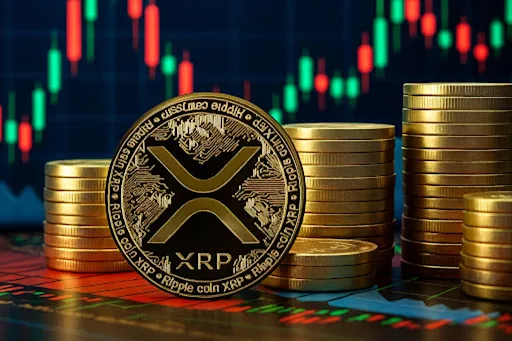Komodo CTO on the importance of deflationary tokenomics as environmental strategy

In an interview with crypto.news, Kadan Stadelmann, CTO of Komodo, describes the need to integrate sustainable practices and deflationary mechanisms to advance the blockchain industry while addressing environmental concerns.
Blockchain technology is at a crossroads where the demand for sustainable tokenomics and environmental consciousness is reshaping the industry. As the world grapples with climate change, blockchain projects are innovating to minimize their ecological footprint.
Deflationary mechanisms, such as token burning, are not just financial tools but part of a broader strategy to create a greener, more sustainable economic model. It helps manage token supply, creating scarcity and attracting investors who prioritize long-term value and sustainability.
The industry’s focus on sustainability and efficient tokenomics is setting new standards.
Stadelmann believes that the future of blockchain technology hinges on adopting sustainable and deflationary tokenomics.
Considering the rapid evolution in tokenomic models, particularly with the rise of deflationary mechanisms, how are these models influencing long-term token value and investor behavior across the blockchain industry?
Tokenomic models, especially those incorporating deflationary mechanisms, have been influential in creating long-term value for crypto investors. On the reverse side, projects that have inflationary tokenomics often create an environment that favors the cryptocurrency’s creators or large holders. Smaller holders, or people who are just discovering the cryptocurrency, are at a disadvantage since they usually can’t accumulate enough of the supply to influence market value. Additionally, for centuries, we’ve seen the long-term negative effects of inflation and hyperinflation of fiat currencies across the global economy. Deflationary mechanisms such as reducing the block reward (i.e. BTC) or burning tokens (i.e. BNB) have historically led to increased market value for cryptocurrencies.
Is Komodo making any moves in this regard?
Recently, the Komodo community approved three proposals, two of which will directly lead to a more deflationary tokenomic model for KMD. These include KIP0002 (burning 100% of transaction fees and KIP0003 (reducing the block reward from 3 KMD to 1 KMD). The other approved proposal — KIP0004 — will transition the Komodo blockchain from Proof of Work (PoW) to Proof of Stake (PoS) either in 2025 or 2026 (exact date TBD).
In terms of scalability and operational efficiency, what advantages do the model supporting independent blockchains for each project offer over traditional single-chain platforms?
The most important advantage of supporting a multi-chain model, rather than a single-chain model is the autonomy for crypto projects to shape their own tokenomics. Projects that build on Ethereum, for example, have no ability to reduce the underlying transaction fees (gas) on each transaction. Users also have to hold ETH to pay for gas, even if their transaction doesn’t otherwise involve ETH (i.e. trading one ERC-20 token for another ERC-20 token on a DEX). For cryptocurrencies that use their own blockchains, there is no need to charge a gas fee or rely upon a secondary cryptocurrency. Projects can also set a more minimal amount on transaction fees. Scalability is another factor. With each cryptocurrency having its own blockchain, transaction completion times are usually much shorter due to less mempool congestion. Typically, transaction fees are also much more consistent and cheaper.
What architectural innovations are currently leading the way in minimizing environmental impacts within the blockchain development sector? How do these technologies manage to balance scalability with energy efficiency?
From an environmental sustainability perspective, the biggest innovation is Proof of Stake. As we saw in September 2022, Ethereum’s move to Proof of Stake (PoS) reduced energy consumption by an estimated 99.5% compared to Proof of Work (PoW). The network also became more scalable as a result. If we look at other PoS-based blockchains, on average they have a much higher transaction per second (TPS) limit than PoW-based blockchains. Another important aspect to consider is that PoS cryptocurrencies make it much easier for average, non-technical users to actively participate in the network’s security and earn block rewards. This leads to higher participation among HODLers and creates a greater incentive to hold for a longer period of time vs. sell during poor market conditions.
How are deflationary strategies like token burning shaping market dynamics and token valuation over time in the broader blockchain ecosystem?
It’s all about simple economics, or tokenomics in this case. In some cases, deflationary strategies like token burning can contribute to price stability or mitigate downward price pressure. By reducing the supply of tokens, these mechanisms help counteract inflationary pressures that could otherwise devalue the token over time. This stability can increase investor confidence and attract more long-term investment. If demand for a specific cryptocurrency is at least remaining the same or increasing over time, deflationary tokenomics should theoretically lead to a price increase.
What are the main architectural choices that can help blockchain platforms maintain high throughput and efficiency without compromising on security or inflating costs?
There are several potential choices that can help crypto projects achieve high throughput and efficiency. While Proof of Work (PoW) often offers high-level security (especially for large blockchains like Bitcoin), it can be resource-intensive and limit throughput. Proof of Stake (PoS) and variants like Delegated Proof of Stake (DPoS) offer higher throughput with lower resource requirements but require careful design to ensure security. Scaling solutions like state channels (i.e. Lightning Network) or sidechains can enable off-chain transaction processing, reducing the load on the main blockchain and increasing throughput. However, they require careful integration with the main chain to maintain security and interoperability.
How crucial is it for blockchain platforms to keep transaction fees low?
The reality is that developers are more likely to build on a blockchain that allows for cheaper transactions. As a result, users are also more likely to start using various dApps if they are affordable. Blockchains should make it easy for developers to design smart contracts that minimize computational complexity and gas consumption. This is possible via techniques like code optimization, gas-efficient data structures, and off-chain computation. Additionally, dApp developers should consider using precompiled contracts for computationally expensive operations.
From an industry-wide perspective, when designing blockchain solutions with a focus on environmental sustainability, what are some of the key considerations that developers should prioritize to ensure their platforms are both efficient and minimally impactful?
As stated above, the easiest method is to utilize PoS. However, if PoW is necessary, consider implementing energy-efficient mining algorithms or variations that reduce the computational workload and energy consumption. Examples include Equihash (used in Zcash) or Ethash (previously used in Ethereum). Operating nodes or mining farms prioritize energy-efficient hardware and data center practices. This includes using renewable energy sources and optimizing cooling systems to reduce energy waste. Another solution is to optimize the blockchain protocol and architecture for efficiency. This includes reducing the size of blocks, optimizing data storage and retrieval, and minimizing unnecessary computations. Efficient data structures and compression techniques can also help reduce the overall energy footprint.















